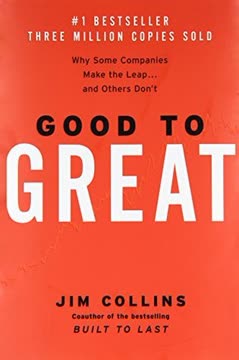Key Takeaways
1. Know Your Audience: Tailor Your Message to Their Needs
The more you can learn about your audience, the better.
Audience research is crucial. Begin by gathering information about your listeners' demographics, knowledge level, and expectations. Consider their professional backgrounds, interests, and potential biases. This insight will help you tailor your content, language, and examples to resonate with them effectively.
Adapt your approach accordingly. Once you understand your audience, adjust your speech to meet their needs:
- For experts: Focus on in-depth analysis and cutting-edge information
- For novices: Provide clear explanations and relatable examples
- For mixed groups: Strike a balance, offering both foundational concepts and advanced insights
Remember, your goal is to connect with your listeners and deliver value. By knowing your audience, you can create a speech that engages, informs, and inspires them.
2. Set Clear Expectations: Define Your Speech's Purpose
Every speech has one of three functions.
Identify your primary objective. Before you start writing, determine whether your speech is primarily:
- Informative: To educate and enlighten
- Persuasive: To change minds or inspire action
- Inspirational: To motivate and uplift
Craft a clear statement of intent. Write a concise sentence that captures your speech's purpose. This will serve as your guiding light throughout the writing process, helping you stay focused and on-track.
Align your content with your goal. Once you've defined your purpose, ensure that every element of your speech supports it:
- For informative speeches: Present clear, well-organized facts and explanations
- For persuasive speeches: Build compelling arguments and address potential counterpoints
- For inspirational speeches: Share powerful stories and paint a vivid picture of possibilities
By setting clear expectations, you provide a roadmap for both yourself and your audience, increasing the likelihood of a successful and impactful presentation.
3. Craft a Compelling Topic: The Heart of Your Speech
Get the main argument right and you cannot write a bad speech. Get the main argument wrong and you cannot write a good one.
Distill your message to its essence. Your topic should be clear, specific, and concise – ideally expressed in a single sentence. This core idea will serve as the foundation for your entire speech, guiding your content selection and organization.
Develop your argument systematically:
- Write your topic in one sentence
- Expand it to a paragraph
- Flesh it out to a full page
- Create a detailed outline
- Draft your full speech
Keep your topic front and center. Throughout your speech, constantly refer back to your main argument. Every point, example, and story should support and reinforce your central message. This laser focus will make your speech more coherent, memorable, and impactful.
Remember, a strong topic is like a compass – it keeps you on course and helps your audience follow your journey from start to finish.
4. Master the Art of Language: Write for the Ear, Not the Eye
A speech is like a lyric but in speech writing the lyrics also create the music.
Embrace simplicity and clarity. Use straightforward language that your audience can easily understand and follow. Avoid jargon, complex sentence structures, and overly technical terms unless absolutely necessary.
Craft for spoken delivery:
- Use short sentences and active voice
- Incorporate rhetorical devices (e.g., repetition, alliteration, metaphors)
- Create a rhythm and flow that sounds natural when spoken aloud
Edit ruthlessly. Read your speech out loud multiple times, refining the language with each pass. Pay attention to:
- Awkward phrasing or tongue-twisters
- Overly long or complex sentences
- Repetitive or unnecessary words
Remember, your goal is to create a speech that sounds conversational and engaging when delivered, not an academic paper meant to be read silently.
5. Showcase Your Individuality: Let Your Personality Shine
This is, you should remember, your speech. It is not just a speech that you have to deliver. It has to be your speech.
Identify your unique traits. Reflect on your personality, communication style, and strengths as a speaker. Ask trusted friends or colleagues for their insights on what makes you engaging and authentic.
Infuse your personality into your speech:
- Use anecdotes and examples from your own experiences
- Incorporate your natural humor (if appropriate)
- Adopt a tone and style that feels genuine to you
Strike a balance. While it's important to be yourself, remember that public speaking requires a slightly heightened version of your everyday persona. Practice finding the sweet spot between authenticity and effective stage presence.
By letting your individuality shine through, you create a connection with your audience that goes beyond the words you're saying. This personal touch makes your speech more memorable and impactful.
6. Deliver with Confidence: Practice Makes Perfect
You should not hear the speech for the first time at the same moment that the audience does.
Rehearse thoroughly. Practice your speech multiple times, ideally in conditions similar to the actual event. This repetition will help you internalize the content and improve your delivery.
Refine through rehearsal:
- Identify and smooth out awkward transitions
- Perfect your timing and pacing
- Develop natural gestures and body language
Prepare for the unexpected. Practice handling potential disruptions or technical issues calmly. The more comfortable you are with your material, the better you'll be able to adapt to unforeseen circumstances.
Seek feedback. If possible, deliver your speech to a test audience and ask for constructive criticism. Use their input to make final improvements before the big day.
Remember, confidence comes from preparation. The more you practice, the more natural and polished your delivery will become.
7. Embrace Simplicity: Less is More in Effective Communication
Above all else, try to be clear.
Focus on your core message. Resist the temptation to cram in every piece of information you know. Instead, prioritize the most important points that support your main argument.
Simplify your language and structure:
- Use everyday words instead of complex terminology
- Break down complicated concepts into digestible chunks
- Organize your speech with a clear beginning, middle, and end
Limit visual aids. If you use slides or props, keep them minimal and purposeful. They should enhance your message, not distract from it.
Embrace the power of pause. Don't be afraid of silence – strategic pauses give your audience time to absorb important points and can add emphasis to key moments.
By embracing simplicity, you make your message more accessible and memorable. Remember, your goal is not to impress with complexity, but to communicate effectively and leave a lasting impact.
Last updated:
FAQ
What is "The Art of Speeches and Presentations" by Philip Collins about?
- Comprehensive Speechwriting Guide: The book is a practical manual on how to write and deliver memorable speeches and presentations, focusing on both the art and craft of public speaking.
- Central Argument Focus: Collins emphasizes the importance of having a clear central argument, which he calls the "Topic," as the foundation of any effective speech.
- Mnemonic Framework: The book is structured around the mnemonic "DETAIL"—Delivery, Expectations, Topic, Audience, Individual, and Language—to guide readers through the speechwriting process.
- Real-World Relevance: It addresses the realities of modern business and political communication, offering advice for both high-profile and everyday speaking occasions.
Why should I read "The Art of Speeches and Presentations" by Philip Collins?
- Practical, Actionable Advice: The book is designed to be immediately useful, focusing on what to do before, during, and after writing a speech.
- Demystifies Public Speaking: Collins aims to reduce the fear of public speaking by providing clear steps and realistic expectations.
- Not Just for Orators: The advice is relevant for anyone who needs to communicate persuasively, from business professionals to students.
- Focus on Authenticity: The book helps readers find their own voice, rather than imitating famous speakers like Barack Obama or Winston Churchill.
What are the key takeaways from "The Art of Speeches and Presentations"?
- Attention to Detail: Success in speechwriting comes from meticulous attention to the six DETAIL elements—Delivery, Expectations, Topic, Audience, Individual, and Language.
- Central Argument is Crucial: Every good speech is built around a single, clear, and specific argument or message.
- Know Your Audience: Understanding who you are speaking to and what they expect is essential for crafting relevant and persuasive content.
- Clarity Over Complexity: Use simple, jargon-free language and avoid clichés to ensure your message is understood and remembered.
How does Philip Collins define the "DETAIL" method in "The Art of Speeches and Presentations"?
- Delivery: The speech is written to be spoken, not read; consider how it will sound and be performed.
- Expectations: Clarify what you and your audience expect from the speech—inform, persuade, or inspire.
- Topic: Identify the central argument or message, and be able to state it in a single sentence.
- Audience: Research and understand your audience’s knowledge, attitudes, and context.
- Individual: Ensure the speech reflects your own character and voice, making it personal and authentic.
- Language: Use clear, simple, and direct language, avoiding jargon and unnecessary complexity.
What is the process for writing a memorable speech according to "The Art of Speeches and Presentations"?
- Start with the Audience: Begin by understanding who you are speaking to and why you have been invited.
- Define Expectations: Determine the primary function of your speech—information, persuasion, or inspiration.
- Clarify the Topic: Spend time crafting a single, clear argument that will anchor your entire speech.
- Build Structure: Develop your speech from a sentence to a paragraph, then a page, and finally a detailed outline before drafting.
- Edit and Rehearse: Ruthlessly edit for clarity and relevance, and rehearse aloud to refine delivery and flow.
How does Philip Collins recommend handling language and jargon in speeches?
- Be Clear and Simple: Use language that an intelligent layperson can understand; avoid technical terms unless absolutely necessary.
- Avoid Jargon and Clichés: Collins provides a list of overused phrases and buzzwords to avoid, emphasizing that jargon alienates audiences.
- Edit Ruthlessly: Cut unnecessary words and phrases, and strive for concise, vivid expression.
- Use Vivid Examples: Ground your arguments in specific stories, facts, and numbers rather than abstractions.
What are the three main functions of a speech as described in "The Art of Speeches and Presentations"?
- Informative: The primary goal is to leave the audience better informed; requires engaging delivery to avoid being dry.
- Persuasive: The aim is to change the audience’s mind or behavior; requires fair presentation of opposing views and logical argument.
- Inspirational: The goal is to motivate the audience to act or believe; the most challenging, as it relies on authentic passion and context.
How does "The Art of Speeches and Presentations" advise you to find and develop your central argument or "Topic"?
- One-Sentence Summary: Be able to state your main argument in a single, clear sentence.
- Test for Opposition: Ensure your statement is specific enough that someone could reasonably disagree with it.
- Expand Gradually: Develop your argument from a sentence to a paragraph, then a page, and finally a full outline.
- Anchor Everything: Every part of your speech should relate back to and support your central argument.
What does Philip Collins say about the importance of individuality and character ("ethos") in speeches?
- Authentic Voice: Your speech should reflect your own character, not just generic or borrowed rhetoric.
- Ethos Matters: Aristotle’s concept of ethos—virtue, practical wisdom, and disinterest—builds trust with the audience.
- Self-Assessment: Use video and feedback from friends to understand how you come across and adjust accordingly.
- Performance, Not Imitation: Aim to present the best version of yourself, not a copy of famous orators.
What are Philip Collins’ top tips for delivering a speech effectively?
- Rehearse Aloud: Practice reading your speech out loud to catch awkward phrasing and improve flow.
- Use Notes Wisely: Prepare cue cards with key points rather than reading verbatim from a script.
- Engage the Audience: Make eye contact, vary your pace and tone, and use gestures to add energy.
- Avoid Overreliance on Slides: Use visual aids sparingly, if at all, and never let them replace your spoken message.
- Prepare for the Unexpected: Know your opening and closing lines by heart, and be ready to adapt if things go off-script.
How does "The Art of Speeches and Presentations" address common fears and challenges in public speaking?
- Preparation Reduces Fear: Confidence comes from knowing your material is well-prepared and relevant.
- Writer’s Block is a Myth: The only cure is to start writing; editing and refining will improve your draft.
- Not Every Speech Needs to Be Historic: Focus on doing your job well for the occasion, not on achieving greatness.
- Embrace Feedback: Use rehearsal, video, and honest critique to improve both content and delivery.
What are some of the best quotes from "The Art of Speeches and Presentations" by Philip Collins, and what do they mean?
- “Get the main argument right and you cannot write a bad speech. Get the main argument wrong and you cannot write a good one.” — Emphasizes the foundational importance of a clear central message.
- “Writing is arguing silently.” — Highlights that writing a speech is an act of persuasion, not just information transfer.
- “A speech without the voice of your character is not really a speech. It is just someone in a room, talking.” — Stresses the need for authenticity and personal voice.
- “It is not big and clever to use jargon and vocabulary that nobody would ever use when talking to their friends.” — Advocates for clarity and accessibility in language.
- “If you look like you belong up there, the chances are that you will.” — Encourages confidence through preparation and self-belief.
Review Summary
The Art of Speeches and Presentations receives mixed reviews. Readers appreciate its practical advice on speech preparation, content structure, and audience analysis. The book's focus on writing effective speeches, rather than delivery, fills a gap in public speaking literature. Some find it methodical and useful, particularly for formal speeches. However, critics note its length, repetitiveness, and limited scope. The writing style is described as bland and occasionally acrid. Overall, readers value the book's insights but suggest it could be more concise and engaging.
Similar Books








Download PDF
Download EPUB
.epub digital book format is ideal for reading ebooks on phones, tablets, and e-readers.




